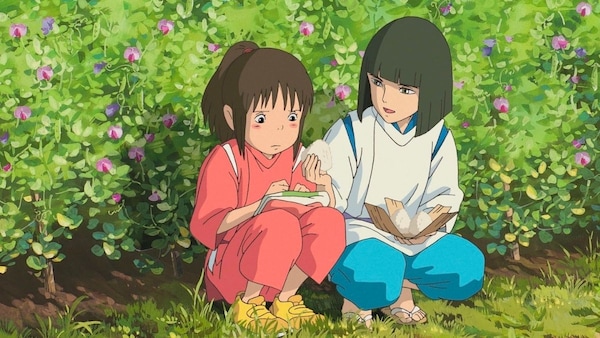Spirited Away: Examining Hayao Miyazaki’s Studio Ghibli animation film and its enduring legacy
Ahead of Studio Ghibli founder Hayao Miyazaki’s birthday on 5 January, revisiting Spirited Away, one of the most revered animated films he created and directed.

Last Updated: 12.43 PM, Jan 01, 2022
Over 22 years after the release of Studio Ghibli’s Spirited Away, the Japanese animated fantasy remains one of the most influential animated films in the roster of world cinema. Arguably one of the most celebrated pieces of anime films, it claimed the Oscar of Best Animated Feature, becoming the only hand-illustrated and non-English animated film to win that honour.
The film effectively placed Studio Ghibli on the world map. Soon enough, the rights to the movie were nabbed by Disney, after which it was dubbed in English. Despite premiering in only 151 movie theatres in the US, this proved to be a worthwhile move for the film, because it made the movie accessible to a large number of non-Japanese, English speaking viewers. The success of the film also cemented the fact even films that are embedded in a specific culture — in this case, Japanese folklore — could resonate with such a large section of the global audience.
Even in terms of Japanese animation, Spirited Away arrived at a time where more and more people were starting to opt for computer animation over traditional 2-D hand-drawn animation. In Spirited Away, almost all the frames are painstakingly painted by hand. Even when computer animation is used, it is done rather sparingly. In an Entertainment Weekly interview, former Studio Ghibli president Toshio Suzuki spoke about how it takes almost 60 animators and a month’s gruel to come up with one-minute worth of movie. Despite the hard process, it is the one that has defined the Miyazaki animation aesthetic.
The film narrates the story of a pre-teen girl named Chihiro and her brush with the supernatural. She visits a theme park with her parents, who are turned into pigs after an episode of overeating. She then finds a job at the bathhouse, where she must serve customers so as to survive, remember her identity and return home. Highly original in both scope and execution, Spirited Away welcomes its viewers into a mystical world that is at once fascinating and petrifying. At its centre is a pre-pubescent, young protagonist — the underdog one would either identify with or root for. It is a story of adaptability, of growing up, and yet not forgetting her identity at her core.
Spirited Away, at its time, was also the segue for many to familiarise themselves with anime. Despite being predominantly directed towards a younger audience, the film, in true Studio Ghibli fashion, delved into profound themes like environmentalism, consumerism and supernaturalism. Unlike the Western animation counterparts, where characters are almost always symbols of good or evil, Spirited Away resists such simplification. It does not dilute its concepts to appeal to a wider audience. Its heroine herself is rather unpleasant at first, but starts to mine her better qualities when she is rechristened Sen. Here, evil is not bested; but characters make informed choices that let their latent niceties come forth.
There is no singular message that the film propounds. Thus, every viewering of the film reveals something new, offers new things to chew upon. Spirited Away can be watched and reflected on in solitude or with people — and the delicately crafted film with its intricate visuals is sure to immerse you each time.
Watch Spirited Away here

